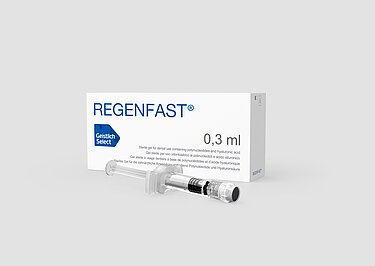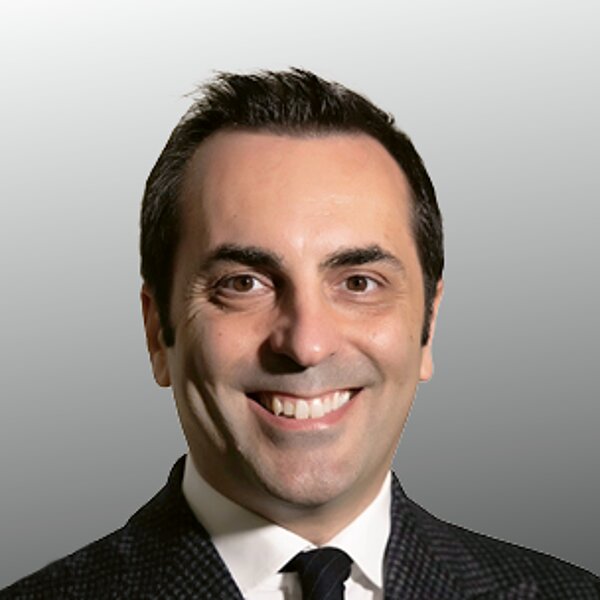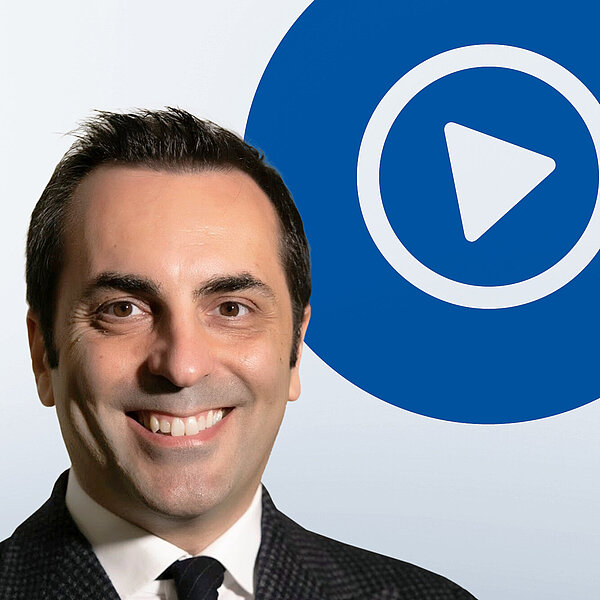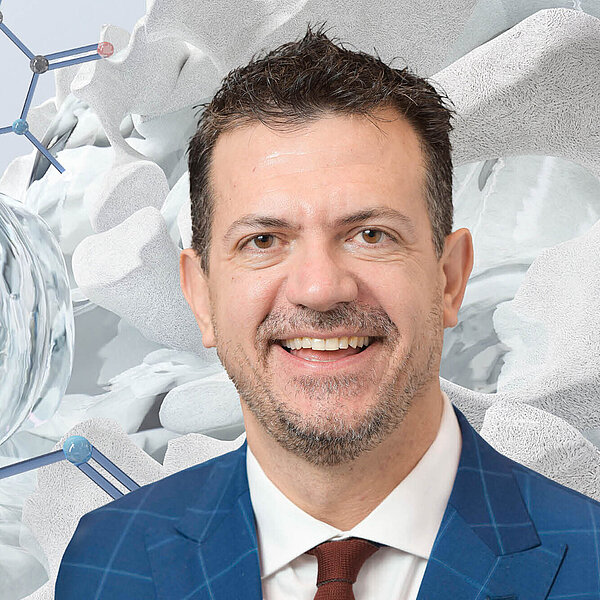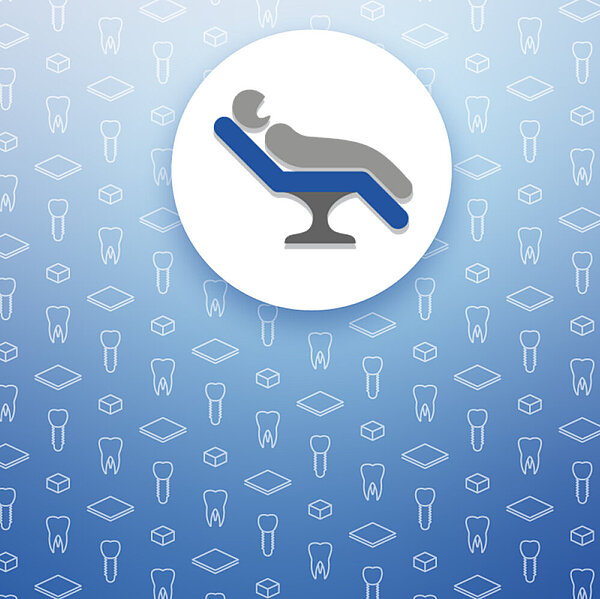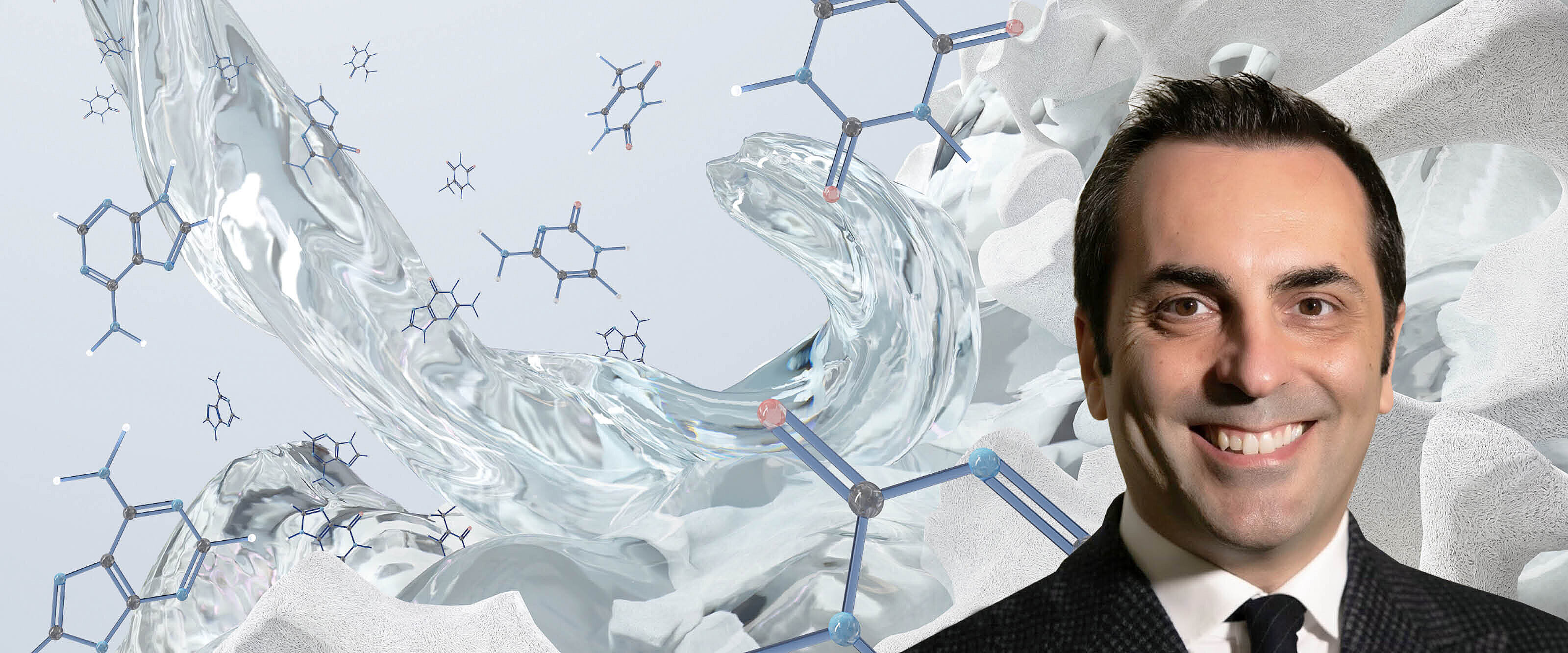
“I have achieved impressive pocket reduction and clinical attachment gain.”
REGENFAST® is a biological agent that primarily contains hyaluronic acid & polynucleotides. It aids quicker, more physiological repair, and appears to boost periodontal regeneration & new bone formation.
Interview with Prof. Francesco Cairo by Turgut Gülay and Verena Vermeulen
Prof. Cairo, you have been using REGENFAST® for some time now in the treatment of intrabony defects and you now have patients with a follow-up time of two years. Where do you see the biggest benefits of the product?
Prof. Cairo: There are several. REGENFAST® definitely accelerates wound healing. The healing after periodontal surgery is faster than in traditional flap surgery. And I have achieved impressive pocket reduction and clinical attachment gain, in some cases up to 5 mm. But we are only at the beginning of the story, so we should be careful with our hopes and expectations.1
When do you use the product on its own, and when in combination with Geistlich Bio-Oss®?
I use REGENFAST® on its own in deep, contained defects, in accordance with EFP guidelines.2 And I combine it with Geistlich Bio-Oss® in non-contained defects. So, the larger the defect and the fewer the residual bone walls, the more important it is to combine REGENFAST® with Geistlich Bio-Oss® as a scaffold. So far, I haven’t tested REGENFAST® in pockets associated with a larger horizontal defect.
Have you tested it in other indications, too?
I have concentrated on intrabony defects, but I can foresee using REGENFAST® in furcation defects, too. According to treatment guidelines, there is an indication for periodontal regeneration concepts in class II furcationS.1 The evidence is based on the use of enamel matrix derivative in combination with Geistlich Bio-Oss®. So, this could be a potential new window.
Additionally, the capability of REGENFAST® to interact with bony cells might also make it useful for Guided Bone Regeneration. Several clinicians have started working in this field.
How did you start using REGENFAST®? How did you learn about it?
The product has a great background in dermatology, especially in wound healing. About three years ago, in 2019, I became aware of it. The preclinical studies were very encouraging, showing interactions with both fibroblast and bone cells.3 I was curious about it and speculated that it could work in periodontal tissues as well. Intrabony defects offer very challenging conditions for testing regenerative potential, involving for example the formation of new periodontal ligament and new bone. Sinus floor elevation is an easier situation for bone regeneration, but positive results in this indication are therefore less relevant.
Are there any tips & tricks you would like to share with colleagues who are just about to start using the product?
Sure. Firstly, the product itself is easy to use, but you must create the right conditions for the regeneration to happen. So, in my experience REGENFAST® works very well as long as you also carry out proper regenerative periodontal surgery using magnification, fine instruments and very thin sutures. And you do proper root planning, proper wound closure, proper plaque control, etc. A good product cannot allow you to bypass these steps or it will be less effective.
Secondly, when I use REGENFAST® in combination with Geistlich Bio-Oss® in intrabony defects, the first drop always goes onto the root surface and another portion on the biomaterial to create a sticky consistency—but not too much, because otherwise it makes the biomaterial too fluid and difficult to apply.
And thirdly, it is important to work on a very clean root surface without blood. But I don’t perform EDTA root conditioning, as I would with enamel matrix derivative.
Why is a new solution interesting for you?
I am a clinical researcher; my interest is in improving clinical practice. We know what the limits of periodontal regeneration are with the existing products. I have been working with enamel matrix derivative, for example, for the last 20 years. But what I would hope for with this new solution is an increased predictability of outcomes and an increased capability of clinicians to perform periodontal regeneration.
References


